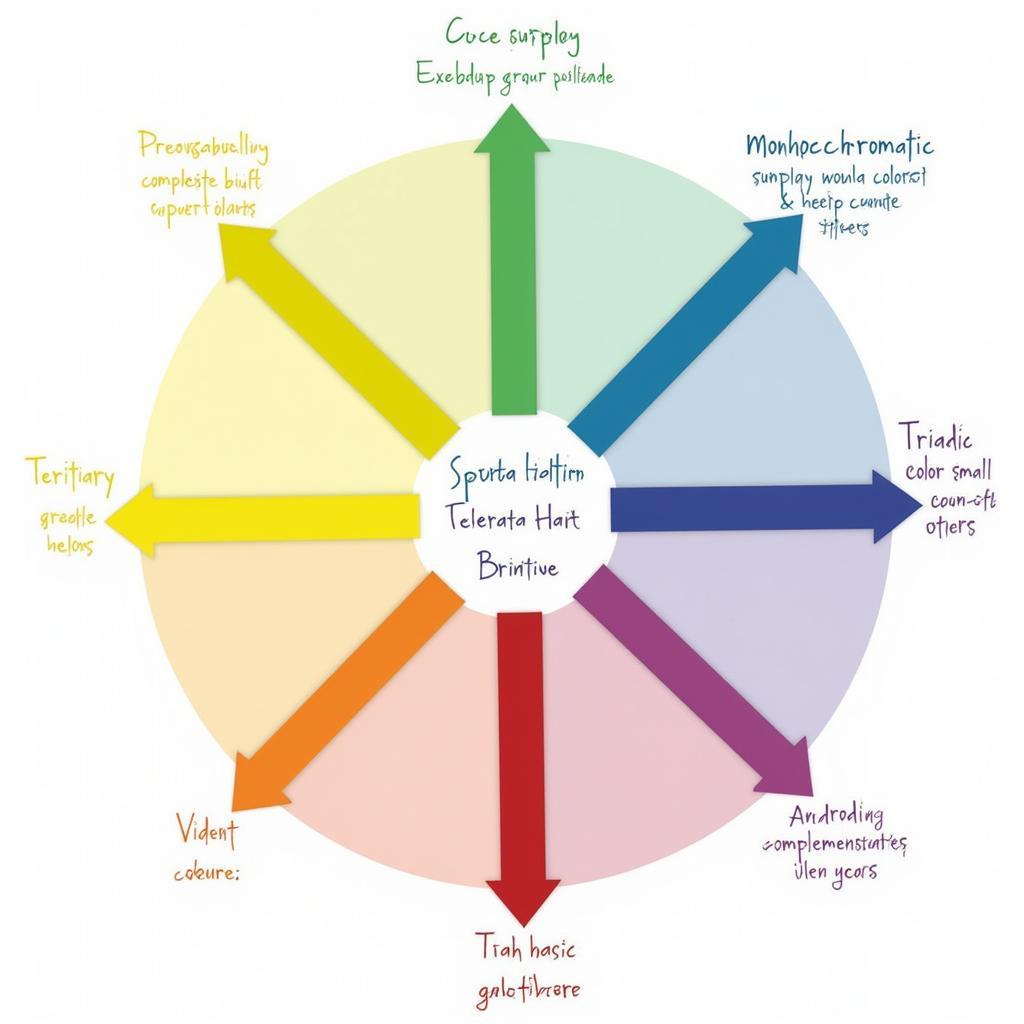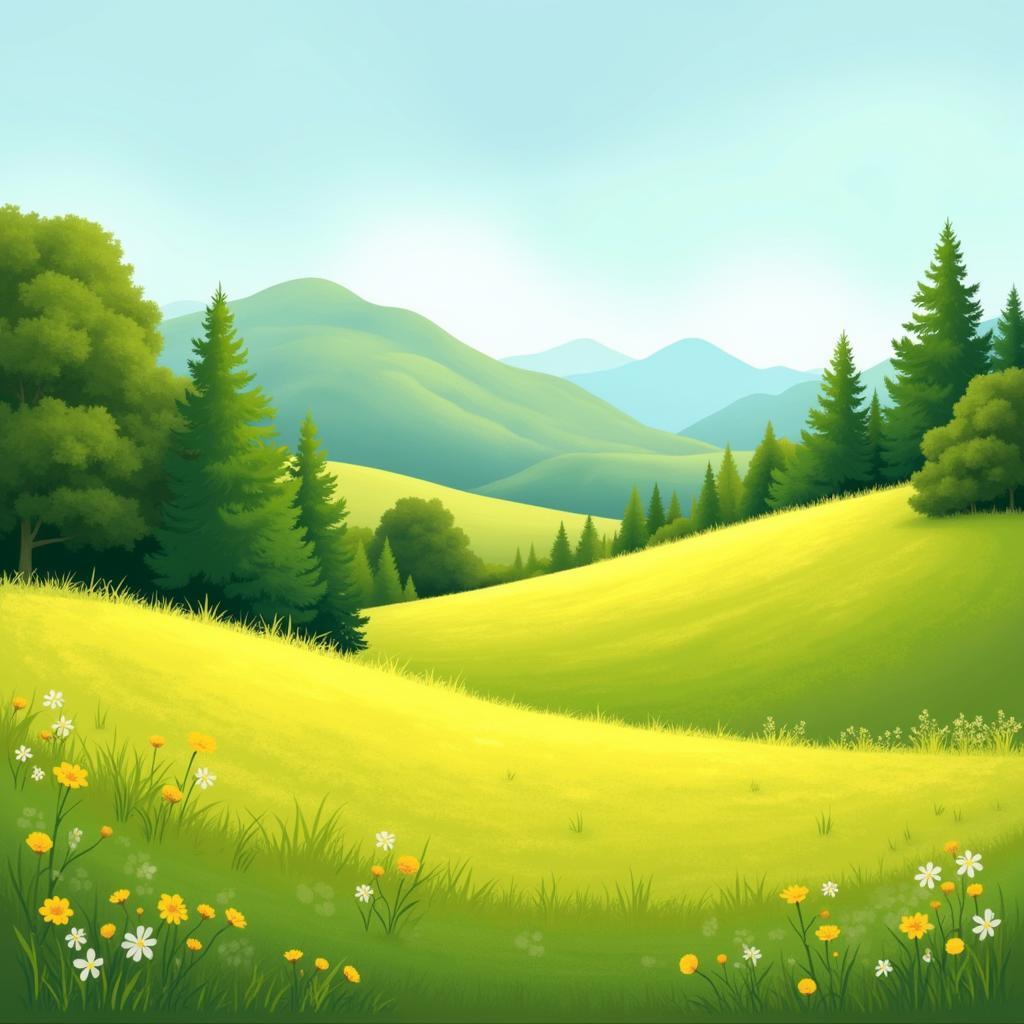Unleash Your Creativity: Color Theory Art Projects
Color theory is the foundation of any successful art project. Understanding how colors interact, harmonize, and create different moods is essential for bringing your artistic visions to life. Whether you’re a seasoned artist or just starting out, exploring Color Theory Art Projects can significantly enhance your skills and unlock new creative possibilities. From understanding the basics of the color wheel to experimenting with different color schemes, let’s dive into the vibrant world of color theory and discover how you can use it to create captivating artwork.
Choosing the right art supplies is also important. Check out the best art pens for coloring.
Understanding the Basics of Color Theory
The color wheel, a visual representation of colors arranged according to their relationships, is the cornerstone of color theory. It typically displays primary colors (red, yellow, and blue), secondary colors (orange, green, and violet – created by mixing primary colors), and tertiary colors (red-violet, blue-violet, blue-green, yellow-green, yellow-orange, and red-orange – created by mixing a primary and a secondary color). Understanding these relationships is key to creating harmonious and visually appealing color palettes.
Exploring Different Color Schemes for Your Art Projects
Color schemes, or color harmonies, are combinations of colors that create a particular aesthetic. There are several common color schemes that artists use, each evoking a different mood and effect. Monochromatic schemes use variations of a single color, creating a sense of unity and sophistication. Analogous schemes use colors that are adjacent on the color wheel, resulting in a harmonious and pleasing blend. Complementary schemes use colors that are opposite each other on the color wheel, creating a vibrant and dynamic contrast. Triadic schemes utilize three colors evenly spaced on the color wheel, offering a balanced and visually interesting palette. Experimenting with these different color schemes can dramatically impact the overall feel of your artwork.
“Choosing a color scheme is like setting the stage for your artwork. It determines the mood, the atmosphere, and the overall impact on the viewer,” says renowned artist, Amelia Dubois.
 Color Wheel Basics for Art Projects
Color Wheel Basics for Art Projects
Color Theory Art Projects: Putting Theory into Practice
Now that you have a grasp of color theory basics, let’s explore some practical art projects that will help you apply this knowledge and unleash your creativity.
Creating a Color Wheel
Building your own color wheel is a great hands-on way to solidify your understanding of color relationships. You can use paints, colored pencils, markers, or any other medium you prefer. Start with the primary colors and mix them to create the secondary and tertiary colors, observing the subtle variations in hue and saturation.
Monochromatic Magic: Exploring Tonal Variations
Choose a single color and create a composition using only its different shades, tints, and tones. This exercise helps you understand how to create depth and interest using just one color.
Analogous Harmony: Nature’s Palette
Find inspiration in nature and create a landscape painting using analogous colors. Notice how these colors naturally blend together to create a sense of harmony and balance. Need some help with improving your art skills? Visit the art skills crafters closet.
 Analogous Landscape Painting Using Color Theory
Analogous Landscape Painting Using Color Theory
Complementary Contrasts: Bold and Vibrant Artwork
Experiment with complementary colors to create a high-contrast artwork. The juxtaposition of these opposing colors will make your artwork visually striking and dynamic. For a simpler approach, you can find amazing art resources at art paragon.
Triadic Triumph: Creating Balanced Compositions
Use a triadic color scheme to paint a still life. The balanced distribution of colors will add visual interest and create a sense of harmony in your composition. For example, a still life could feature a blue vase, yellow lemons, and red apples, demonstrating how these colors interact and complement each other within a composition.
“Mastering color theory is like learning a secret language of art. It allows you to communicate emotions, create atmosphere, and tell stories through your work,” says leading art educator, Dr. James Moreau.
Conclusion: Embrace the Power of Color in Your Art Projects
Color theory is an invaluable tool for any artist. By understanding color relationships and experimenting with different color schemes, you can elevate your artwork, evoke specific emotions, and express your unique artistic vision. So, dive into the world of color theory art projects and unlock the endless possibilities of color! Explore more about digital art resources at natalia a met art. Or if you’re curious about art history, check out art 150.
FAQ
- What are the primary colors? (Red, yellow, and blue)
- What is a complementary color scheme? (Colors opposite each other on the color wheel)
- How do I create a tint of a color? (Add white)
- What is a triadic color scheme? (Three colors evenly spaced on the color wheel)
- Why is color theory important in art? (It helps create harmony, evoke emotions, and guide visual interest)
- How can I practice color theory? (Create a color wheel, experiment with different color schemes in your artwork)
- Where can I find more color theory resources? (Online tutorials, art books, and workshops)
For further support, contact us at Phone Number: 02462573573, Email: danteum@gmail.com Or visit our address: Savico Megamall, 7-9 Đ. Nguyễn Văn Linh, Gia Thụy, Long Biên, Hà Nội 10000, Việt Nam. We have a 24/7 customer support team.